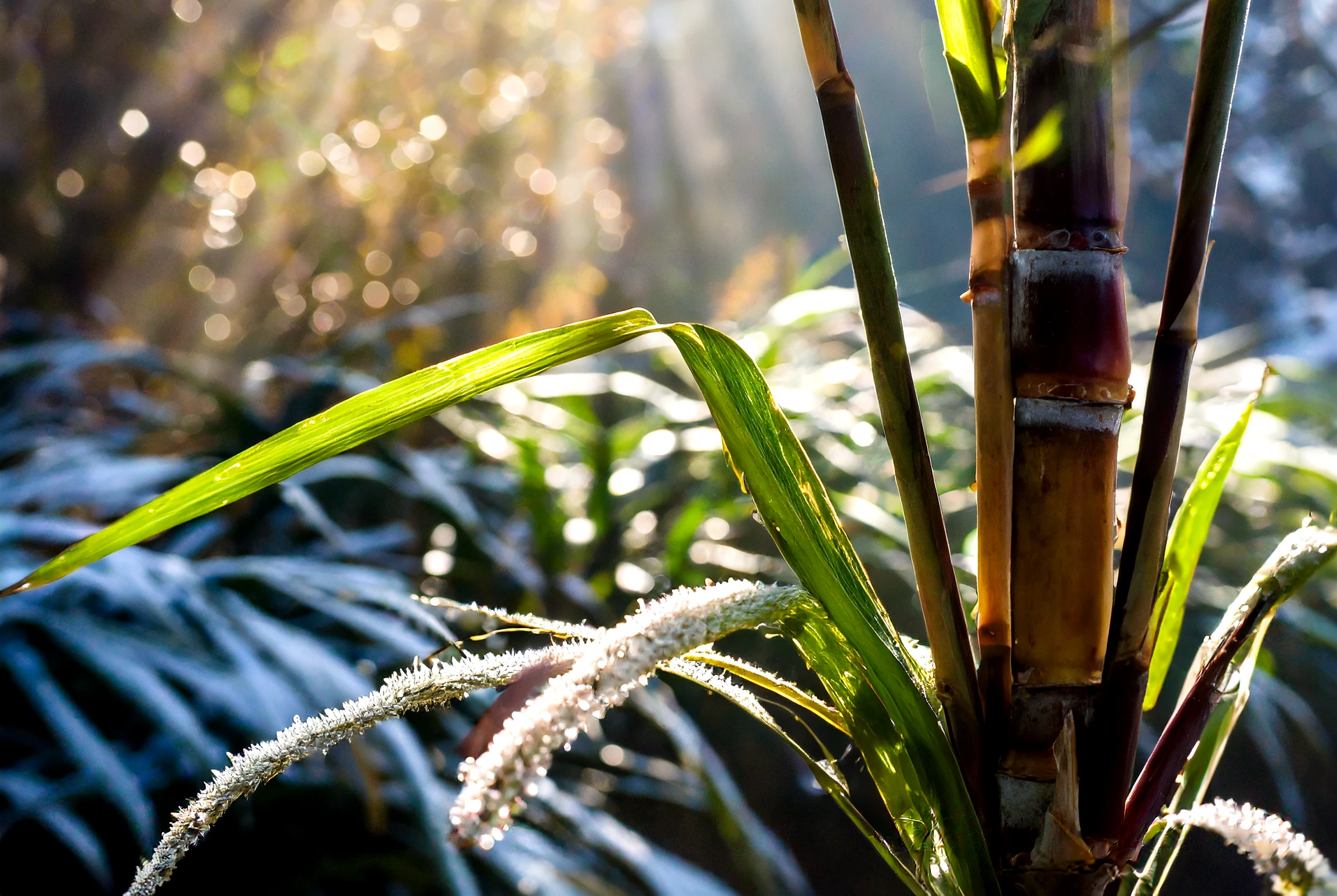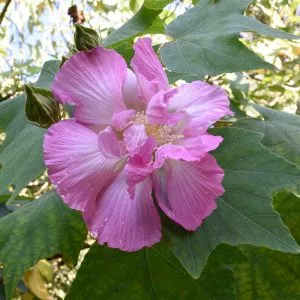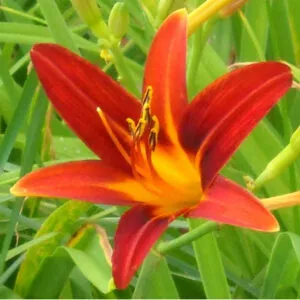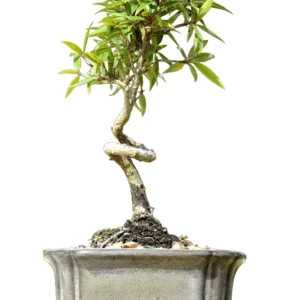No products in the cart.
Has chewing canes from sugar cane plants ever come to your mind? If not, then believe me, it is a sweet sap treat that is delicious 😋
A fact is that sugarcane plants are the number one commercially harvested plant globally. It is a grass-like plant taking center stage in cultural history, and people cultivate sugarcane for food and agriculture organizations for ethanol.
With an unrivaled yield per square foot, sugar cane is the most calorie-dense crop in cultivation. This versatile plant supplies 70% of the world’s sugar extracted from its hearty stems. No other plant matches sugar cane’s productivity and global importance as a sweetener.
The best part is growing sugar cane plants in your home garden. It is as close as you will get to cultivating your sweets.
Plant Name: Saccharum officinarum
Other Name: Sugar cane or sugarcane plants
Plant Type: Perennial grass in warm regions and annual otherwise
Native Areas: Southeast Asia
Light Requirement: Full sun to partial shade
Watering: Frequent Watering
Fertilizer: Compost
Toxicity:
Temperature: Warm Regions
Propagation: Stem cutting and seeds
Growth: 10 to 24 feet tall
Soil Type: Loam, sand, clay
USDA Hardiness Zones: 8-12
All About Sugar Cane Plants
The Saccharum officinarum, known as sugar cane plants, dates back to 4000 BC, and you can find different species like the Saccharum sinense and Saccharum barberi. The sugar cane plant is believed to have originated in India and Southeast Asia, respectively.
Still, since then, sugar production has boomed, but what is sugar cane, and what does it look like? The thick stems look like bamboo, with the horizontal joints spaced up to ten inches apart. You find a leaf blade and bud produced at each joint or node.
The leaf and buds are protected by a sheath wrapping around the stem and grow two inches in diameter, shooting upwards like bamboo. In its native habitat, it can reach 20 feet tall, but growing sugar cane as plume grass reaches eight feet tall and wide.
Sugar cane grows with rhizomes and produces shoots growing thin, long, and sharp plumes. In the United States, you can grow sugar cane in late summer to overwinter and grow for up to eight months from spring to early fall.
Still, when you plant sugar cane, it can take very long to develop mature stems, but they grow fast in warm weather. Another reason the tropical plant is also smaller than in the tropics is because it will keep growing until you harvest mature stems.
How to Grow Sugar Cane Plants

If you live in USDA growing zones 9 and 10, you can plant sugar cane outdoors in tropical regions in late summer to early fall. Your hardy plant will root during winter to grow in spring. You can expect to harvest the sugar cane juice in about a year.
Still, if you live in cooler regions and want to cultivate sugar cane, you must keep them indoors during winter as they are not frost-hardy. Also, provide your new plants with enough space to grow as windbreakers for your vegetable gardens, as they are tall and bushy.
For sugar cane mills, the crop grows enormous, and in most tropical and subtropical regions, you get plentiful harvests with crop management for the sugar content. But for home growing, sugar cane is mainly done with stem cuttings.
Planting them six feet apart in six-inch furrows would be best. For the home garden, you can place the sugarcane plant on top of the soil to bury it lightly, and for planting sugar cane indoors, you place a cutting in a large container with well-drained soil.
Types of Sugar Cane

You can find three types of sugar cane, but these are typically planted for making cane syrup and chewing.
Chewing Canes
The chewing cane has a softer fiber that sticks together when chewed, but you can use it to make syrup for residential use. Some popular sugar cane varieties are the Yellow Gal, Home Green, White Transparent, and Georgia Red.
-
$15.00Sold By: Beauties & Beasts
In stock
Cactus – Leuchtenbergia principis
Rated 4.83 out of 5 based on 24 customer ratings04Sold By: Beauties & Beasts -
Free Shipping$19.97Sold By: Grow Your Own Food Nursery
In stock
Prickly Chayote Squash (Chayote Espinudo) Bare Root Starter Plant
Sold By: Grow Your Own Food Nursery -
Free Shipping$9.96 – $44.00Sold By: CZ Grain
In stock
Pink Tulip Bulbs for Planting
Rated 4.60 out of 5 based on 156 customer ratings00Sold By: CZ Grain -
Free Shipping$4.95Sold By: SunSoul Plants
$5.99In stock
Hibiscus Confederate Rose Seeds – 25+ seeds, free shipping
Only 15 available and it’s in 1 people’s basketRated 4.87 out of 5 based on 99 customer ratings01Sold By: SunSoul Plants
Syrup Canes
Sugar cane juice contains less sucrose and is often used for making syrup. Popular varieties are Louisiana Striped, Louisiana Ribbon, Louisiana Purple, Green German, and Cayana.
Crystal Canes
The cane stalk is used mostly for commercial use as it has a high content of sucrose that forms a crystal.
Sugar Cane Plant Care

The perennial grass grows well in a tropical climate in warm regions to enjoy a plentiful harvest. Or you will need to grow sugar cane in containers in cooler regions. Still, for gardeners in warm climates, cane growing can become invasive, and you must provide proper maintenance where planted.
Light
Growing sugarcane as a perennial plant is not difficult, and it only needs full sun with partial shade. Sugar canes do not grow well in a shady garden.
Soil

To grow healthy sugar cane plants, they need well-draining soil, and it needs to be crumbly. The sugar cane stems are known as energy-hungry plants. It saps nutrients rapidly from the soil, and it is important to amend it with rich organic matter.
So, mix in some fertile compost and lime to keep them happy.
Water
To keep sugar cane actively growing, it needs consistent moisture but must not be overly wet and watered. If your region has no rainfall, you must provide additional irrigation about one to two inches weekly.
Still, if you plan to harvest the sugar cane, you can reduce the watering as dry spells are beneficial to provide stunted growth and increase the sugar production at the lower part of the cane stalks.
Temperature and Humidity

Sugar cane growing is done in high temperatures with a lot of sunlight to maximize growth. Most sugar cane varieties cannot grow in freezing conditions as the leaves turn brown and wither away.
Fertilizer
Growing sugar cane benefits from regular feeds as it needs a lot of nutrients to provide you with sugarcane juice. During the growing season in summer, it needs fertilizing weekly. Hence, it needs larger quantities of nitrogen but not too high as it will weaken the stems.
Pruning Sugar Cane Plant
If you use sugarcane for sucrose, you need not prune it, but if you want to use it as a sweet or decorative plant, you need to cut it back occasionally. The grass can become unruly and spiky. In spring and summer, you can prune them back to the ground to keep the size down or stump them in fall to regrow in spring.
Overwintering

As a perennial, you can overwinter your sugar cane to protect them. After harvesting the sugar cane, you will prep your plant and cut it close to the ground. Then, place a mound of soil over the stubble to protect it from the cold.
Then, please wait until after the first frost to remove the dirt for it to grow.
How to Propagate Sugar Cane?
When you plant sugar cane, you use seed cane to do this. But you can also grow sugar cane cuttings. It is not a complicated process to propagate sugar cane, and here are the steps:
Take your sterilized pruners to cut a healthy sugar cane stem cutting of six inches with two internodes on the upper part from a parent plant.
Plant sugar cane stems cuttings deep in the ground, ensuring that not more than two inches are visible above the soil. You can also bury it horizontally.
It can take one to three weeks for new sprouts to appear on the nodes, and the roots will begin forming.
You can also grow sugar cane from seeds, but it is not a preferred choice. The best is to follow the instructions on the seed packet; germination takes about two weeks. Then, you can transplant them in a pot or the garden.
Sugar Cane Common Pests and Diseases

With sugar cane growing, you will find many problems cropping up in the garden, from pests to fungal diseases.
Pests
Sugarcane white grub feeds on the roots and is a nasty larvae starting in the soil. Your sugar cane will begin turning yellow and wilt. The best way to prevent them is to keep the soil healthy by using a lot of organic matter and removing debris. Also, rotate your sugar cane growing until the ground a month after harvesting.
The best is to remove grubs by hand as grownup beetles or add beneficial nematodes to the soil like Steinernema feltiae, a microscopic worm.
Sugarcane borers attach the plant and bores through the stem, leading to stunted growth and yellowing leaves with holes. The best time to control them is when the larvae appear in spring using neem oil or insecticidal soap.
Other common garden pests are aphids, spider mites, and mealybugs to termites.
Diseases
A fungus called sugar cane smut will distort the growth of the plant. Look for black whip-like structures among the foliage as it produces spores carried by the wind. Use a smut-resistant variety as a defense.
Pests spread the mosaic virus and cause discoloring on the leaves green and red.
Eyespot shows up as eye-shaped lesions that run vertically on the leaves. You can use a fungicide to combat the disease.
Frequently Asked Questions
To get the best yield, leave your sugar cane plant to grow long before harvesting. We recommend harvesting before the first frost yearly if you plan to use it as a syrup. To cut down the stems, you need a machete or saw. Then, cut stems to above the ground and leave the roots untouched.
Then put on gloves to pull each leaf off the stem and use the leaves as mulch.
Depending on the variety of sugar cane you have, some have more sugar than others. But you can do the following:
Strip the outside of the stem and then scrub each one to remove dirt.
Cut the sugar cane into small segments to fit inside a pot.
Fill the pot with water and submerge the stems to boil for a few hours.
When the sugars are extracted, the cane turns brown, and you will have sugar water.
Throw the stems away, strain the water to remove any debris, and transfer it back to the pot to bring to a boil and stir.
Please leave it to boil for a few hours to form syrup at your desired consistency.
You can store sugar cane for up to two weeks in a refrigerator by wrapping the cut ends in plastic wrap. For sugar cane syrup, place it in sterilized jars and leave them to cool down before placing it in the fridge. Use your syrup within two weeks.
For long-term storage, you can cook the syrup down to a paste and smear it in a dehydrator on sheets to make fruit rolls. Then, store the sugar cones in an airtight container in the freezer.
Cut your stripped sugar cane into small pieces and leave them in water for a while. Strain and you have the sugar juice available.
Sugar cane produces flower spikes during the fall and only blooms when you grow them as perennials. The blooms will reduce the sucrose production in your plant.
Depending on the variety, sugar cane can last for four to six months, while others can last longer, up to eight months.
Whether you want to buy, sell, or simply reach out to other plant enthusiasts, Plantly is the right place to be!
-
$11.95Sold By: SunSoul Plants
$15.95In stock
Spider Plant Curly – Chlorophytum comosum variegated in 3″ pot
Only 1 available and it’s in 1 people’s basketRated 4.87 out of 5 based on 99 customer ratings00Sold By: SunSoul Plants -
$25.30Sold By: Carlo's Plant Farm
In stock
Ming Toy Daylily | Carlo`s Plant Farm
Rated 5.00 out of 5 based on 22 customer ratings00Sold By: Carlo's Plant Farm -
Free Shipping$72.60Sold By: BONSAI WORLD LLC
In stock
Coiled FICUS NERIOFOLIA Umbrella Bonsai Tree
Sold By: BONSAI WORLD LLC -
$70.00Sold By: Andy Nursery
$75.00In stock
Red Finger Lime Grafted Citrus Tree. 2 Feet Tall.
Only 47 available and it’s in 1 people’s basketSold By: Andy Nursery










